I’m excited to finally post Austin Clayton’s flies on FrankenFly. He is extremely talented tying without a vise, by just using his hands. I asked Austin many questions to help people understand what is involved with tying classic salmon and bass flies. Austin wrote a nice introduction and then we jump right into the questions.
My name is Austin Clayton, and I live along Colorado’s front range. Trout streams are a few minutes from my front door, as well as some great warm water fishing. Growing up we lived in Michigan, and my Dad would take us fishing off the docks of Lake St. Clair. We soon after we moved to Alberta, Canada and my fishing stopped for years. My family then relocated back to Colorado. I was never interested in fishing much, but that soon changed 5 years ago when my best friend suggested we go fishing. We did a little spin fishing for bass, and I had a great time and decided if I was gonna fish I would do it right and fly fish. I bought a cheap fly rod kit and mostly figured it out. I was given a vise and some materials from a friend, and started trying to figure out fly tying. I got an Orvis book and tied some abominations that some how caught fish. I started looking online at patterns and found the classic fly tying forum. I fell in love with classics. I started with winged wet flies, then moved onto salmon flies and MOM flies. I have a bachelors degree in classical period European history, and I started reading into the history of fly tying and fishing. Finally, about a year ago I set the vice aside and started tying classics only in hand. It has been an interesting progression to say the least. 4 years ago I couldn’t tie a fly and now I tie classics in hand, have tied flies for books, and teach classes. Never would have thought this would have happened, but I am very glad it did.
What is a good pattern to start with when tying a classic bass fly and salmon fly?
I think it is probably best to start with a feather wing for Classic Bass Flies. A pattern like the Ondawa or Bob white. Then you can do single strip wings and then married wings so on so forth. As for salmon flies, Irish patterns come to mind first. Generally they are not terribly complex in their construction, and do not have toppings. Once you feel proficient you can move on to slightly more advanced patterns like a Red Rover or a Kate.
Do you have any suggestions for someone who wanted to start tying these types of flies?
Take your time, it’s not a race. Make every thread wrap count. Go on Classicflytying.com and post flies and get suggestions and critiques from the members. ASK for HONEST critique, it will be hard to hear someone rip your fly apart that you thought was good and spent so much time working on, but it will make you a much better tier. Search out people in your area who already tie these flies that will take a lot of the learning curve out of the equation. The biggest thing is patience. Your not going to be great straight away. It will take hundreds of flies to really become proficient at this art. I have only been tying flies for 5 years now, classics for 4, and I am no where near where I want to be yet. It takes time, dedication, and a lot of practice to become a good tier.
Are there any special techniques one needs to learn when wanting to tie classic bass or salmon flies?
Really there is no difference between tying a classic fly and regular trout flies. It’s all strapping fluff to a hook. Mounting wings is really one of the most difficult parts to master, otherwise there is very little difference. What takes more effort is identifying quality materials, and learning how to manipulate them to do what you want. Tying in hand is not as difficult as it may seem. It is awkward initially, but that passes soon enough. There are some parts of tying in hand that are easier, and others elements that are harder. Really it is a very minor skill set to be learned.
Are the cost of materials a lot higher for these classic flies compared to tying trout flies or modern streamers?
Yes, for the most part you will be spending a lot more per fly. However, no hobby is cheap. More of the rare and expensive materials can easily be subbed and helps lower the cost. This is why it is very important to take your time and make good use of your materials.
Could you explain the nylon connection at the very front of classic bass flies? How is it tied in and what material is used?
The loop at the front is silk worm “gut”. It is actually the gland that creates the silk that the silk worms make their cocoons from. The silk worm is euthanized right before the metamorphosis process occurs and the gland is removed at its fullest capacity. The gut is extruded into a predetermined diameter. These strands are either twisted together or used as snells. The loops is formed by pinching it around a cylindrical object, then tied on the underside or sides of the hook shank with thread.
Where is a good place to purchase feathers and materials for this kind of tying?
Some items can be purchased from your local fly shops if you search for quality materials. However, your best bet is speciality online stores like feathersmc.com and aofeathers.com
What kind of hooks are used for classic bass and salmon flies? Do you vary the sizes?
Traditionally blind eye hooks were used. Metal eyes on hooks are a relatively modern development. You can use eyed hooks just fine, however the real deal should be used if you want it to “look” right. However, these are not available from most hook manufactures. There are some professional hook makers out there like Ronn Lucas Sr. and Captain hooks. These hooks are fantastic, but are expensive. Buying old stock hooks and cutting off the eyes is an option, or completely reworking them into blind eyes is another option, and this is the option I choose cause I enjoy making them. As for size range, that can vary a great deal. Anywhere from size 6 to 6/0 are used, it really depends on the pattern. A generally good size to start on is 2/0 or 3/0.
What type of thread should be used?
That is a major personal preference. Personally I use gossamer as it was what was used traditionally, however it is not easy to tie with, cause it doesn’t flatten and is a little bigger then 6/0 thread. Some people like UTC, others uni, your best bet is to start with finer modern thread and then try out the traditional stuff later.
Do you fish with any of the flies you tie?
Yes, last season I used only classic bass flies. Only fished a couple gut eyed ones and the rest were tied on eyed hooks. I used my 6 weight bamboo with a silk line and gut leader, and it was a very different experience as the gut is very supple. However, there was a certain feeling of correctness about the whole setup. This is probably due to the development of bamboo rods, silk lines, and gut eyed flies and leaders occurring codependently. They all really complement each other very well. I did really well all season on them. As stated in the old literature generally drab patterns do better then gaudy ones, but they all have their time and place.
Would you recommend any books for this type of tying?
There are quite a few modern books on the topic but they take a modern approach to tying these flies, and I prefer and recommend the old books. I feel its best to hear it from the horses mouth. Most are available online and are free to download. If someone really feels as though they have zero clue where to even start, Mike Radencich has a few really good books. “Twenty Salmon Flies” provides step by step descriptions of how to tie 20 patterns, includes a DVD, and has a recipe section at the end of the book.
How do you know if you have tied the wing too long or short on a classic?
While there are some variations in classics, a general mark is just past the bend of the hook. Some vintage flies have shorter wings, and others stupidly long ones. Studying vintage flies is one of the best ways to learn how long wings should be.
How should you measure the proportions?
Proportions are a tricky thing with Classics. Hook shape, length, and personal style are major factors that influence proportions. If two tiers tie the same pattern it is very unlikely they will be identical replications of each other, even if tied on the same hook. Wing shape/length, hackle length, topping and tail meeting points, wing construction, and so on and so forth will all very. The patterns will both be recognizable but will have signature differences. The styles on salmon flies were constantly changing over time. If one looks at the flies depicted in Blacker compared to Pryce-Tannatt, you will see quite an evolution in the style of flies. Looking at vintage flies and plates from books of the time period will be your best bet on gaining an idea of proportions.
What is a good way to learn some of the names and look of some of the well known patterns out there?
Looking at the plates of old books generally shows the more common and popular flies used. Also, Mike Boyer has a great website, Favorite Flies, that shows his renditions of MOM’s and Salmon flies. Beginners can see quite a variety of patterns here, as well as get recipes. Also, www.classicflytying.com is a great place to look and see a variety of patterns.
Austin has put together a video on how to tie a McCloud classic bass fly. This is a Mary Orvis Marbury pattern. There are two parts to the video and both are below. Good stuff!
- Akroyd
- Ballyshannon
- Black and Gold
- Bonne Bouche
- Californian
- Cheney
- Childers
- Classic bass box
- Cunningham
- Frank Gray
- Gray Ghost
- Green and Gold
- Holberton
- Hummingbird
- Maid of the Mill
- Manchester
- Mooselucmaguntic
- Red Doctor
- Silver Cassard
- Thistle
- Tipperlin



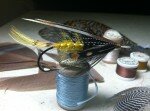
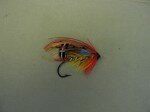
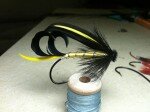
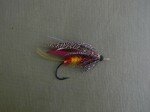
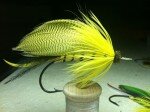
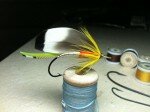
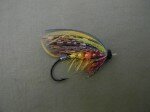
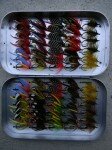
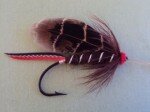
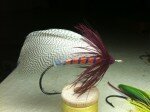

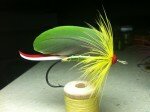
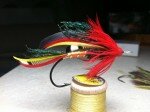
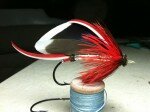
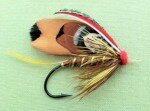
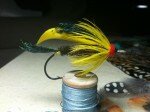
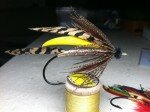
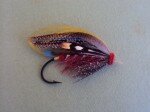
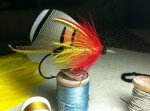

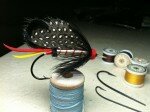





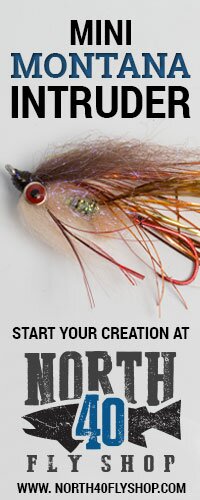
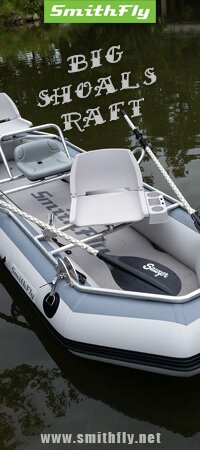


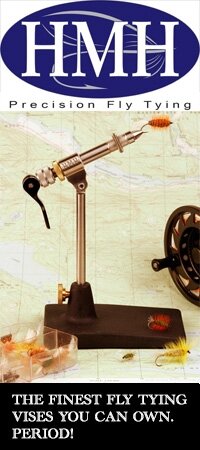


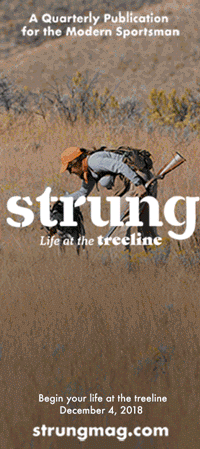




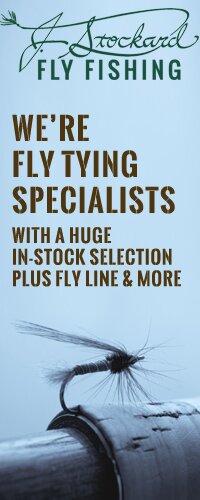


Gorgeous flies!! I am rather glad that I don’t have to try and tie them in order to fish in Colorado. I’d frame them and hang them on the wall.
HaHa!
Yep good looking flies for sure!
Pingback: Tippets: Strike the Indicator, Classic Fly Tier Interviewed, Migration Explained | MidCurrent
Pingback: Tippets: Strike the Indicator, Classic Fly Tier Interviewed, Migration Explained - Skiff Life - Flats and Back Bay Fishing
Pingback: Tippets: Strike the Indicator, Classic Fly Tier Interviewed, Migration Explained | Fly Fishing Tips, Techniques & News: What Is Fly Fishing? We Fly Fish.com